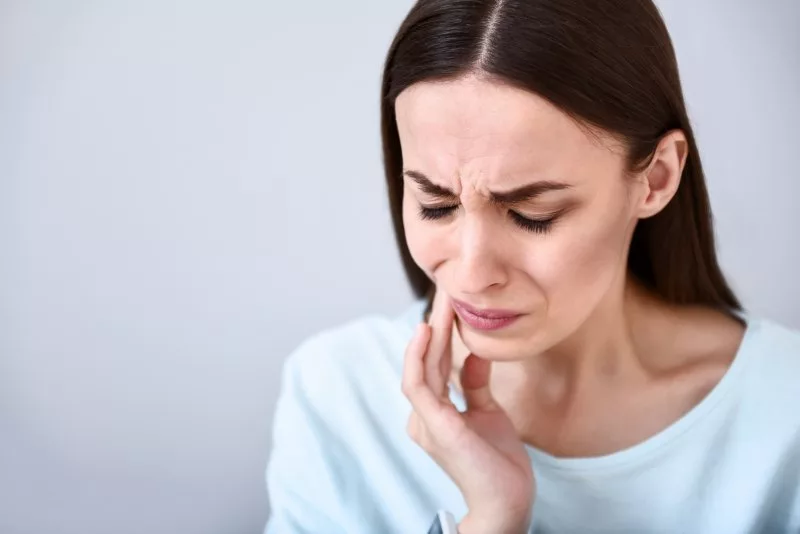
The temporomandibular joint (TMJ) is an intricate component of our anatomy that connects our lower jaw (the mandible) to the skull (the temporal bone). While many people may have heard about TMJ, not everyone knows what TMJ pain feels like, or the underlying causes and treatments available. In this guide, we’ll delve into the sensations, symptoms, and intricacies of TMJ pain, shedding light on what it truly feels like.
1. Understanding TMJ Pain
So, what does TMJ pain feel like? TMJ pain is often described as a dull ache in the jaw joint and surrounding areas, including the ears, neck, and even the shoulders. It may be accompanied by tenderness, muscle stiffness, and difficulty moving the jaw. Here’s a deeper look into the symptoms.
Common TMJ Pain Symptoms:
- Ear pain without infection: One of the more deceptive symptoms of TMJ pain is ear discomfort. Patients frequently visit ear specialists before realizing their pain stems from the TMJ.
- Jaw soreness and tenderness: The discomfort may be constant or come and go. It might be present only when the jaw moves or while it’s at rest.
- Facial pain: Some individuals describe this as a persistent ache or a sensation of pressure around the forehead, cheeks, and even the back of the eyes.
- Pain while chewing: This symptom can be particularly bothersome, as it affects one of our most basic functions.
- Jaw locking: The jaw might get stuck or lock in position, making it tough to open or close the mouth.
- Clicking or popping sounds: These sounds can be heard when opening or closing the mouth, chewing, or even yawning.
- Headaches or migraines: While not exclusively tied to TMJ disorders, frequent headaches can be a telltale sign, especially if they originate around the temples.
2. Causes of TMJ Pain
The pain and discomfort associated with TMJ disorders can arise from several factors:
- Injury: A direct injury to the jaw, the joint, or the muscles of your head and neck can lead to TMJ pain.
- Grinding or clenching the teeth: This can exert immense pressure on the joint, causing pain.
- Arthritis: Like other joints in the body, the TMJ can be affected by arthritis, resulting in discomfort.
- Stress: Often underestimated, stress can cause behaviors like teeth clenching that can induce TMJ pain.
- Disk erosion or misalignment: The TMJ has a soft disk that cushions the movement between the skull and the jawbone. Any issue with this disk can lead to TMJ disorders.
3. TMJ Treatment – Finding Relief
Fortunately, if you suspect you’re experiencing TMJ pain, there are treatments available. The key is to consult with a TMJ specialist like Dr. Nojan Bakhtiari, who can provide a comprehensive evaluation and tailor a treatment plan to your specific needs.
Potential TMJ Treatments Include:
- Physical therapy: Focusing on exercises that strengthen the jaw muscles can alleviate symptoms.
- Medications: Anti-inflammatory drugs, pain relievers, and muscle relaxants can offer temporary relief.
- Dental splints or mouth guards: These devices can mitigate the effects of teeth grinding, a frequent culprit in TMJ pain.
- Surgery: In severe cases, surgical interventions might be necessary, although they are considered a last resort.
4. Importance of Seeing a TMJ Specialist
Why is it crucial to consult a TMJ specialist for your pain? A specialist, like Dr. Nojan Bakhtiari, has specific expertise in diagnosing and treating TMJ disorders. They can pinpoint the exact cause of your pain and suggest the most effective treatments.
Remember, TMJ pain can mimic other conditions, making it essential to get an accurate diagnosis. For instance, ear pain might lead one to see an ear specialist when the actual root of the problem is the TMJ.
5. Final Thoughts
TMJ pain is a complex and multifaceted condition that can significantly impact one’s quality of life. The sensations range from dull aches to sharp pains, often radiating to areas beyond the jaw like the ears and neck. The causes of TMJ disorders are varied, but with the help of a TMJ specialist like Dr. Nojan Bakhtiari, effective treatments are within reach.
If you believe you might be suffering from TMJ pain, don’t hesitate to seek professional guidance. By understanding what TMJ pain feels like, you’re better equipped to take the first steps towards relief and improved quality of life.
For more information or to schedule a consultation, contact the offices of Dr. Nojan Bakhtiari, a renowned TMJ specialist dedicated to providing state-of-the-art TMJ treatment and care.
TMJ Treatment by Dr. Nojan Bakhtiari
Dr. Nojan Bakhtiari is a highly experienced cosmetic dentist and one of the leading providers of Botox for TMJ and headaches in New York City, NY. With years of experience and a commitment to providing the highest quality care, Dr. Bakhtiari is an expert in the use of Botox for the treatment of TMJ disorder and headaches.
Dr. Bakhtiari has a deep understanding of the underlying causes of TMJ disorder and headaches, and has extensive experience in using Botox to treat these conditions. He uses a combination of the latest techniques and technologies, including Botox injections, to provide his patients with the most effective treatment possible.
If you are looking for a safe and effective way to treat your TMJ disorder or headaches, Dr. Bakhtiari and his team are here to help. With their expertise and commitment to providing the highest quality care, you can trust that you will receive the best possible treatment for your condition.
To learn more about Botox & TMJ treatment by Dr. Nojan Bakhtiari & schedule your consultation today!

